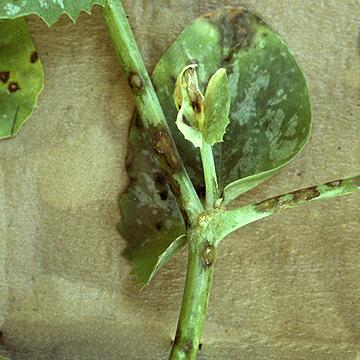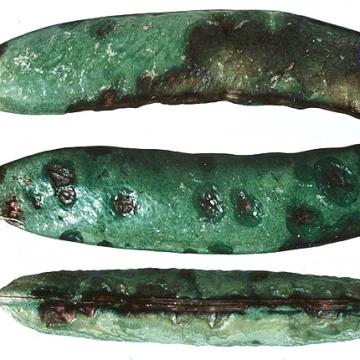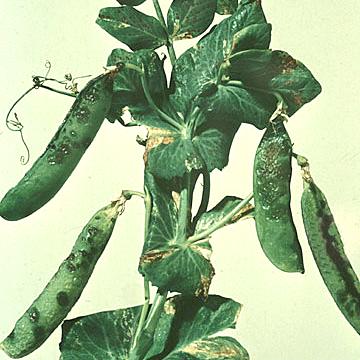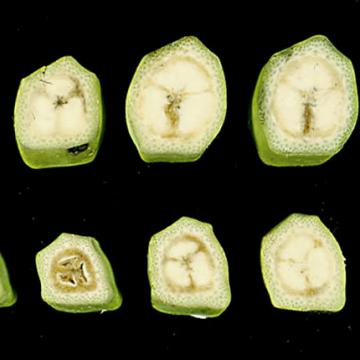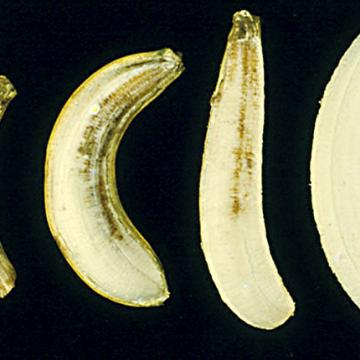DISEASE: Bacterial blight
HOST: Pea
Pea pod with diseased seeds and infection along the suture.
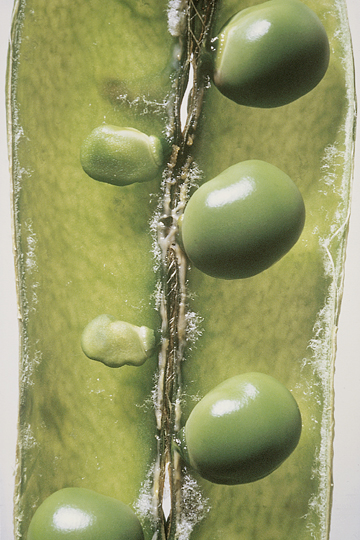
Bacterial blight | Pea
DISEASE: Bacterial blight
HOST: Pea (Pisum sativum)
PATHOGEN: Pseudomonas syringae pv. pisi
SOURCE: J. M. Kraft
DISEASE: Bacterial blight
HOST: Pea
Pea plant with water-soaked lesions on stems and leaves with some bacterial exudate evident. Irregular lesions turn dark brown with light tan centers. Severe distortion of stems, petioles, and growing points may occur.
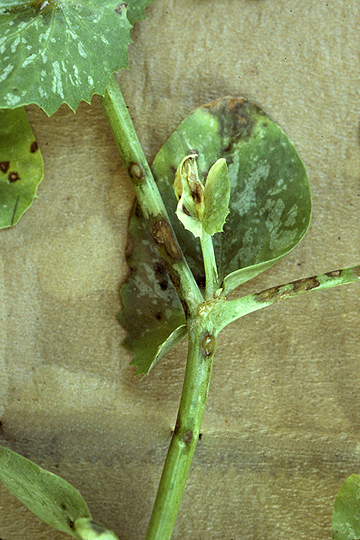
Bacterial blight | Pea
DISEASE: Bacterial blight
HOST: Pea (Pisum sativum)
PATHOGEN: Pseudomonas syringae pv. pisi
SOURCE: S. Thomson
DISEASE: Bacterial blight
HOST: Pea
Dark lesions on pods and dorsal sutures.
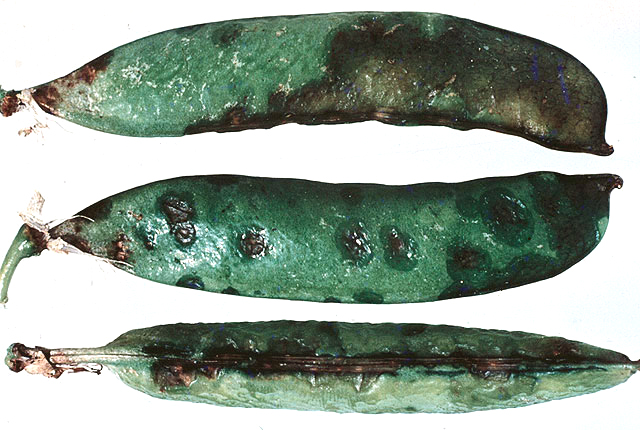
Bacterial blight | Pea
DISEASE: Bacterial blight
HOST: Pea (Pisum sativum)
PATHOGEN: Pseudomonas syringae pv. pisi
SOURCE: J. Young
DISEASE: Bacterial blight
HOST: Pea
Severely diseased plant with array of blight symptoms.
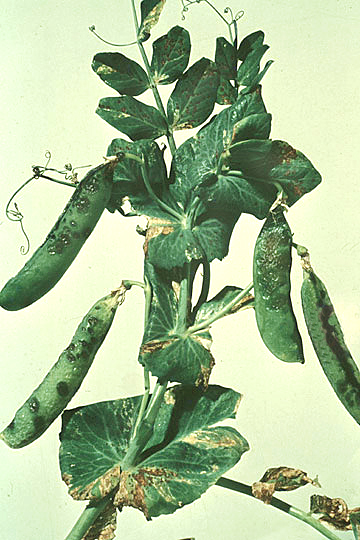
Bacterial blight | Pea
DISEASE: Bacterial blight
HOST: Pea (Pisum sativum)
PATHOGEN: Pseudomonas syringae pv. pisi
SOURCE: J. Young
DISEASE: Bacterial blight
HOST: Pea
Leaves with typical blight symptoms. The disease also affects nodes, stipules, floral parts, stems, and pods.
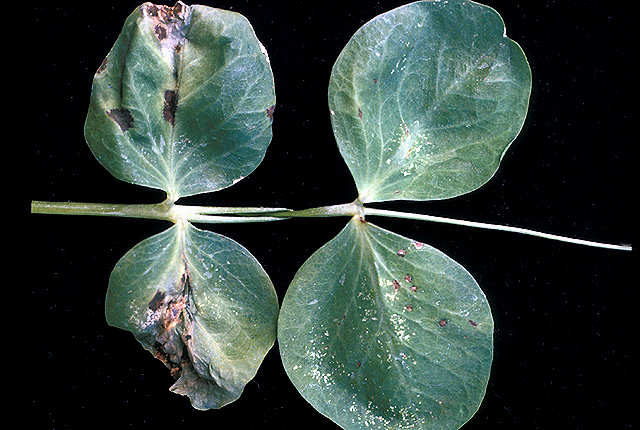
Bacterial blight | Pea
DISEASE: Bacterial blight
HOST: Pea (Pisum sativum)
PATHOGEN: Pseudomonas syringae pv. pisi
SOURCE: M. Schroth
DISEASE: Bacterial finger-tip rot
HOST: Banana
Cross sections of fruit with internal discoloration and rot. This disease is also known as Mokillo disease.
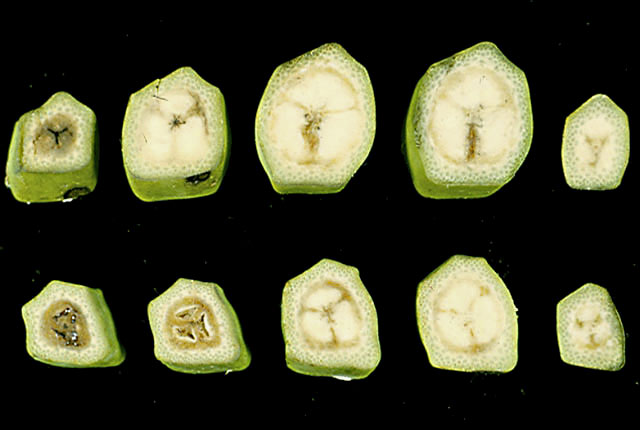
Bacterial finger-tip rot | Banana
DISEASE: Bacterial finger-tip rot
HOST: Banana (Musa sp.)
PATHOGEN: Burkholderia cenocepacia
PATHOGEN SYNONYM: Pseudomonas cenocepacia
SOURCE: I. Buddenhagen
DISEASE: Bacterial finger-tip rot
HOST: Banana
Longitudinal sections of fruit with internal discoloration and rot. Healthy (right).
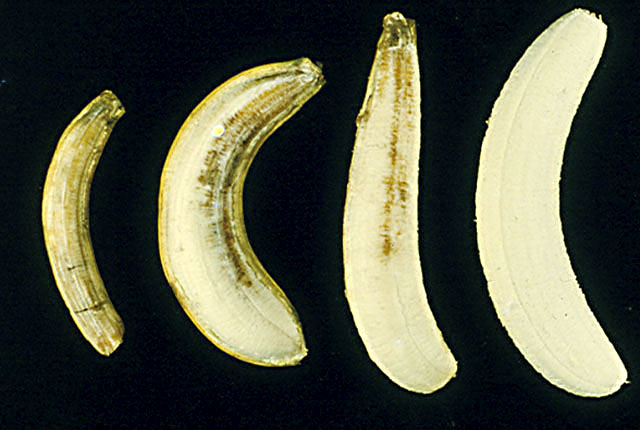
Bacterial finger-tip rot | Banana
DISEASE: Bacterial finger-tip rot
HOST: Banana (Musa sp.)
PATHOGEN: Burkholderia cenocepacia
PATHOGEN SYNONYM: Pseudomonas cenocepacia
SOURCE: I. Buddenhagen
DISEASE: Bacterial finger-tip rot
HOST: Banana
Diseased banana hand with external discoloration.
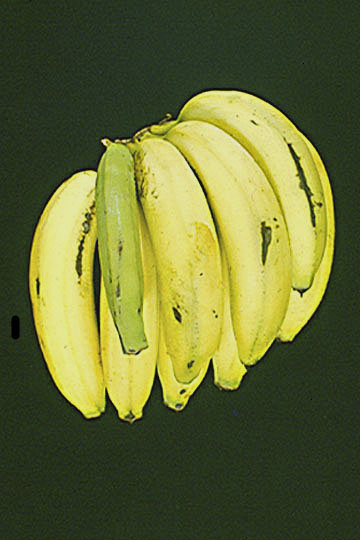
Bacterial finger-tip rot | Banana
DISEASE: Bacterial finger-tip rot
HOST: Banana (Musa sp.)
PATHOGEN: Burkholderia cenocepacia
PATHOGEN SYNONYM: Pseudomonas cenocepacia
SOURCE: I. Buddenhagen
DISEASE: Bacterial leaf spot
HOST: Snapdragon
Leaves with large necrotic areas with brownish centers and purplish margins. Lesions are slightly sunken.
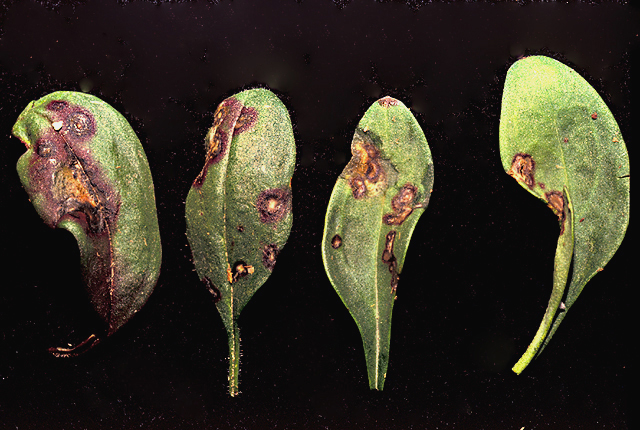
Bacterial leaf spot | Snapdragon
DISEASE: Bacterial leaf spot
HOST: Snapdragon (Antirrhinum majus)
PATHOGEN: Pseudomonas syringae pv. antirrhini
SOURCE: R. Raabe



